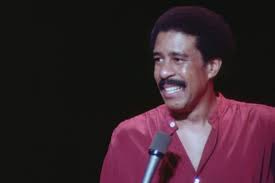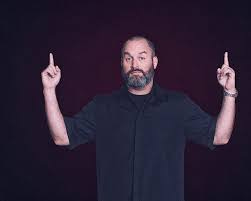What Comics Can Teach Companies
It's not all laughs all the time. Feedback is important. Authenticity is important.
"Laugh as much as possible, always laugh. It's the sweetest thing one can do for oneself & one's fellow human beings." – Maya Angelou
I’m a big stand-up comedy fan and go to a lot of live shows - both big and small - to see comics I love as well as some I’ve never heard of before. Laughing is a good reset. It’s healthy to shift focus, even for an hour, to something that (when done well) surprises you, makes you think, makes you smile, and hurts your face. And even if the comedian bombs, that’s funny in its own way, as you and your friend can laugh later about how bad it was.
When my friend and I were speaking after a recent show, he said, “That last guy was terrible, but kudos to him for getting up there - I couldn’t do that.”
To take his comment further, there are three types of people - a) those who don’t “get on stage”, b) those who “get on stage”, and c) those who “get on stage - and kill.” And I think b and c are much closer than a and b. If you’re trying to succeed - as a business, as an individual, as a musician, as a comic, as an athlete - you’ve got an aim. Presumably, you have some skills. More importantly, you have a good reason to grow your skillset and improve - otherwise, you’d be on the outside looking in, or you should be.
So, what makes a good comic? And how does this relate to business, logistics, or running a good company? While every comic has their own “process,” the first five steps below outline the beginning of any chance at long-term success.
Step 1 - get on stage (get in front of the crowd)
Step 2 - get heckled, hear crickets, bomb (the boxing equivalent would be to “get in the ring” and then get banged up, bruised, and/or knocked out)
Step 3 - think about why
Step 4 - change/improve something
Step 5 - get back on stage
If you’re in business/running a company, you’ve already completed Step 1 and have likely had a little or a lot of experience with Step 2. Below we get into the importance of steps 3-5 as part of the process to create a killer set or a killer company.
Basically, it comes down to how quickly you can close the gap between your expectations (what you think makes for a good performance or good product/service) and reality (are you getting laughs or sales?). Comics get real-time feedback whenever they take the stage, which can be several times a day. How often do you get feedback in your business to see if you’re on track? What is done with it?
Along this process, the basic Four Agreements we’ve mentioned before re: effective communication apply here to building a successful business, an idea, a set, a product - Be Impeccable with Your Word, Don’t Make Assumptions, Don’t Take Things Personally, and Always Do Your Best.
Have a plan. Test the plan. Just as you wouldn’t walk into a meeting with a potential investor for your start-up with no pitch deck and no concept of what you want to build, a comedian doesn’t walk on stage with no idea of what to say. Before that initial interaction with the outside world, there’s a plan. There are jokes (maybe in rough form), there is an order, and there is an expectation that it will be a success. At least have a concept or an idea of where you want to go.
But regardless of how defined your idea/concept, it’s impossible to know ahead of time whether it’ll be a success, so it’s not healthy to be too tied to the outcome. Reminds me of the Reid Hoffman quote, “if you’re not embarrassed by the first version of your product, you’ve launched too late.” Comedians inherently understand that you can’t sit in your kitchen for months waiting for the joke to perfect itself in your head and are always “trying out” new material. You need external contact and feedback. This is part of the process. There is a bias toward action in success, especially when you consider the old military quote, “no plan survives first contact with the enemy.” Take what you think will work and test it out in public to see if you get the appropriate response.
Trial and error is the best way forward. You need to test your product in the real world. Ship the product, deliver the material, and then accept the feedback, iterate, make it better. Then more testing, more feedback until it works, and then onto the next joke/set/product/idea. And if it’s not working, don’t force it - your good idea in your head is not a good idea until proven. Laughs are like sales. Show me a comic who gets laughs, and something is working. If a company has a supposed “great idea” or “hot new thing” but its product is not selling, it’s not a good company or good product. Something’s not working. Maybe the ingredients are there but they haven’t figured out the right recipe. Maybe timing is off.
“Pain + Reflection = Progress.” - Ray Dalio
This iterative process is how those NetFlix hour-long stand-up comedy specials are made. They often take 1-2 years, where the comedian begins with a sheet of ideas and then hits the road, doing shorter sets, playing smaller clubs all over, to see what works and what doesn’t, regularly changing things around (i.e., A/B testing). After just a few months, some jokes have been discarded, some expanded, and new ones emerge. Typically in 6-12 months, the comic has enough material they feel comfortable should work for enough people that they put it together in a longer set and hit the road, still continually testing and refining tone, punch line, word choice, word order, etc. for maximum effect. The special you watch on NetFlix or Amazon or YouTube is the best of what they’ve got. And it’s not even close to what they started with. It’s better. Tested. It delivers what they feel is their best work. When you watch it, you may not agree. You may not find it funny. Maybe it doesn’t resonate with you. But if done well, enough people do connect to the material to make the comic a success.
Understand you will not connect with everyone. And that’s OK. Every comedian bombs. Even those on top have bad nights. Partly due to the fact that they’re putting themselves out there in front of wildly different audiences over the course of a tour. A joke that brings the house down in Tampa, for example, may not get a single laugh in Hartford. Kind of like how country music artists don’t come to Miami, and Bad Bunny doesn’t play Nashville. And some people will always hate Androids or Teslas or Nike for whatever reason.
The key is to find the balance between what is true and authentic to you and how to make it connect with the audience. Two errors I’ve noticed are a) holding on too tightly to what you believe to be the best way, and b) being moved and shifted by every piece of feedback to where you lose your sense of truth. If you’re a company founder, it’s “how do you refine your vision and product to where it’s something you think is special/differentiated that connects with an audience that can support the growth of your company?” It’s not about building a company for someone else. And it’s not about building a company the way you want it, regardless of the feedback.
Speak your truth. A comic first must start with what they find funny (and a founder with what they find interesting/useful). That’s the plan. Then see if it lands. Writing with the intent of trying to guess what someone else will find funny is a lost cause. Just like designing a product to sell vs a product you want to see. The risk and the potential pain is that others won’t see what you see, they won’t want what you want, or they won’t laugh at what you find funny. That’s a risk. But it turns out best when there’s that alignment and connection.
On the comic side, for example, Chad Daniels built his whole act around his son and daughter and being a father, because that’s what he knew. That was his life. And it’s been a big hit. “Footprints on the Moon” is such a classic album.
In business, Fred Smith was famously given a poor grade on a college paper for his idea of FedEx. It was his vision. And he didn’t care about critics (or at least not to the point of abandoning the idea), so he tested it, iterated, kept at it, and - well, if you’re reading this, you’ve heard of FedEx. It worked in the real world. Success.
The other two factors contributing to commercial success are originality and timing.
Don’t follow the crowd. There are a lot of companies in all industries that do OK, that make money, that last (at least for a while). There are even more who fail. The rarest of all are those who are truly exceptional, differentiated, and wildly successful. One thing often missed is the risk involved to get such an outstanding return. Comics and companies that are true success stories do not do what everyone else was doing when they came along. Most of the time not even close. And they always get better. Even those with novel ideas can make them better. It’s intelligently weaving the feedback we discussed earlier into their act or into their product or company that takes them from good to great. Negotiation expert, Chris Voss, has a saying that applies here, “never be so sure of what you want that you wouldn’t take something better.”
To fully understand the risk, we should also note the survivorship bias that applies to the winners. Most comics and companies doing things quite differently than everyone else do not connect with the audience. Most of them fail. It is doing things differently and connecting that sets them apart. It is not funny, if you’ve heard it before. It doesn’t sell, if you can already buy it somewhere else.
Timing. Whether it’s the comic that strikes a nerve with the masses with their worldview or unique twist on common issues (e.g. Jim Jeffries’ gun control bit), or a company that capitalizes on a trend or inspires a new one with its products (e.g., Apple)….timing is extremely important.
For example, a freight visibility company like project44 or FourKites would have been near impossible and almost a sure failure before widespread adoption of cell phones, sensors, and ELDs (electronic logging devices) that have enabled connectivity. And “last mile” became an even hotter area for a time when people were ordered to stay at home, which goes to show you can’t predict when or how timing may work in your favor as a company (or a comic).
Of course, some new things are only hot/current just for a short period (like Denis Leary’s “No Cure for Cancer” from 1992), whereas others will have significant staying-power and long-term relevance - like “Richard Pryor: Live in Concert,” his stand-up special from 1979 (recorded December 1978) at the Terrace Theatre in Long Beach, CA. Most of Pryor’s material from that set still applies today and is funny today. The only two real giveaways that this concert is from the late ‘70s and not from 2021 are 1) the clothes everyone’s wearing, and 2) his reference to President Carter.
Humor wins. Lastly, back to running an organization, good leadership involves some sense of humor. It should be thought of as a tool in the communication tool belt. The CEO probably shouldn’t be a professional comedian but should be able to laugh and frame unfortunate or uncomfortable situations in a light to allow for continued progress and avoid a downward spiral that is always a risk during difficult periods. The keys to success here are reframing (e.g., seeing a failure as an opportunity) and releasing tension (i.e., it’s all going to be OK). If you can laugh when things aren’t going your way, you’re one step closer to getting the wind at your back again. Pessimism is contagious. So is optimism. Laughter can bring you to the lighter side and can be the spark to start another virtuous cycle. Get back on stage. Go again.
"A good laugh overcomes more difficulties and dissipates more dark clouds than any other one thing." – Laura Ingalls Wilder
"There is nothing like a gleam of humor to reassure you that a fellow human being is ticking inside a strange face." – Eva Hoffman
***
In Case You Missed It
Beyond Logistics post #1 re: Trucking 101 —> here
Beyond Logistics post #2 re: Life —> here
Beyond Logistics post #3 re: Pricing —> here
Beyond Logistics post #4 re: Communication —> here
Beyond Logistics post #5 re: Technology —> here
Beyond Logistics post #6 re: 3PL trends —> here
About the author: Dave Ross currently serves as Chief Strategy Officer at Ascent Global Logistics and EVP at Roadrunner. He is also a Director of Global Crossing Airlines. Prior to his current roles, he was Managing Director and Group Head of Stifel’s Transportation & Logistics Equity Research practice. Based in Miami, FL, he’s also an artist, investor, proud dog dad, and serves on a few select non-profit boards (related to Africa, Animals, and Art).
** All opinions in this piece are solely those of the author and not intended to represent those of Ascent Global Logistics or Roadrunner or other affiliated entities.
Thanks for reading Beyond Logistics! Subscribe for free to receive new posts and support my work.










